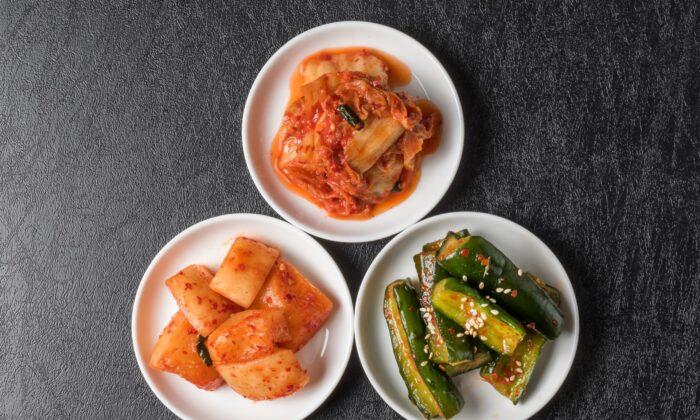Like kimchi? Chances are, if you eat it regularly, you’re less likely to be obese than those who don’t. Eating kimchi is associated with lower obesity rates, according to a new cross-sectional study published in BMJ Open.
Researchers from Chung-Ang University, Korea’s National Cancer Center, and the World Institute of Kimchi found that men who ate one to three servings of kimchi daily had a lower obesity prevalence than those who ate less than one serving. Men with the highest consumption rates of napa cabbage kimchi had 10 percent lower odds of obesity and abdominal obesity. Both men and women who ate more radish kimchi than average had an 8 percent to 11 percent reduced risk of abdominal obesity, respectively.
The researchers established these findings by looking at data from 115,726 individuals who participated in a Health Examinees study in Korea. There were nearly twice as many women as men. The participants ranged in age from 40 to 69, with the average man being 52 and the average woman being 51. None had underlying health conditions such as hypertension, diabetes, hyperlipidemia, cardiovascular disease, cerebrovascular disease, or cancer.
The average prevalence of obesity was 28.2 percent, with obese men having generally higher body mass index (BMI) scores.
- Never or seldom
- Once a month
- Two to three times a month
- One to two times a week
- Three to four times a week
- Five to six times a week
- Two times a day
- Three times a day
Lactic Acid May Aid in Fat Loss
Kimchi is typically low in calories and high in fiber, lactic acid bacteria, vitamins, and polyphenols. But, as the research team wrote, kimchi also contributes to dietary sodium intake. In fact, according to the Korea National Health and Nutrition Examination Survey, kimchi consumption makes up 15 percent of the average Korean adult’s sodium intake. Sodium intake is often associated with a high prevalence of obesity and hypertension.Kimchi Variations
Kimchi is a traditional Korean dish made from salted and fermented vegetables. Baechu kimchi is the most iconic type, made with Napa cabbage, salt, garlic, ginger, scallions, fish sauce, and Korean chili flake. Kimchi is often described as sour, spicy, and savory, although its flavor profile can vary depending on the types of vegetables and ingredients used, as well as the aging or fermenting period. The longer it sits and ferments (like a sauerkraut), the tangier it will taste. The salt, fermentation, and marination give kimchi its distinctive flavor.Cabbage isn’t the only vegetable that can be made into kimchi, although it is the most common. Other kimchi types include kkakdugi, made with radish; oi sobagi, made with cucumber; and kkaennip, made with perilla leaf.
The research team observed that overeating kimchi could have the reverse effect. Participants who ate more than five servings of kimchi per day were more likely to be at risk for obesity. The likely culprit is the food’s high sodium content.








